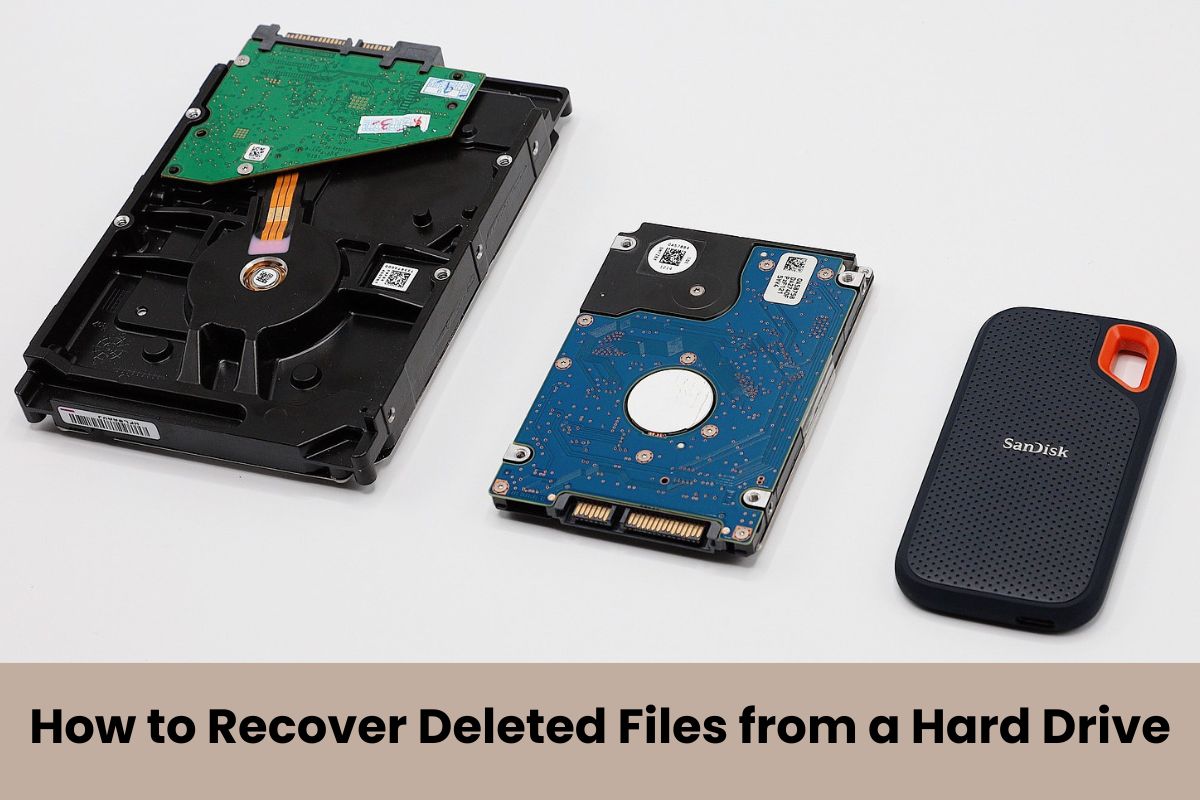In today’s digital age, data loss is a common and often devastating experience. Whether it’s due to accidental deletion, software issues, or hardware failures, losing valuable files can cause significant stress and disruption. Understanding how to recover deleted files from a hard drive is crucial for both personal and professional users. This comprehensive guide will walk you through various methods to recover your lost data, offering detailed steps and expert advice to maximize your chances of successful recovery.
Table of Contents
Understanding Data Deletion
What Happens When Files Are Deleted?
When you delete a file, it doesn’t immediately vanish from your hard drive. Instead, the system marks the file’s space as available for new data. The file remains intact until it’s overwritten by new information.
Common Causes of File Deletion
- Accidental Deletion: Files deleted by mistake.
- Software Errors: Operating system or application glitches.
- Virus Attacks: Malware that corrupts or deletes data.
- Hardware Failures: Issues with the hard drive itself.
- Human Error: Formatting the wrong drive or partition.
Initial Steps After Deletion
Stop Using the Affected Drive
To increase the chances of recovering your files, stop using the drive immediately. Continued use can result in new data overwriting the deleted files.
Avoid Installing Recovery Software on the Same Drive
Installing recovery software on the affected drive can also lead to overwriting. Use another computer or a different drive to download and run the recovery tools.
Methods: How to Recover Deleted Files from a Hard Drive

Using Built-in System Tools
Windows Recycle Bin
- Open the Recycle Bin: Check if your deleted files are there.
- Restore Files: Right-click and select ‘Restore’ to recover your files.
Mac Trash
- Open the Trash: Look for your deleted files.
- Put Back: Right-click and choose ‘Put Back’ to restore the files to their original locations.
Using File History and Previous Versions
Windows File History
- Open File History: Go to ‘Control Panel’ > ‘System and Security’ > ‘File History’.
- Restore Files: Browse and restore the files you need.
Mac Time Machine
- Enter Time Machine: Open Time Machine from the menu bar.
- Restore Files: Navigate to the date before deletion and restore your files.
Third-Party Recovery Software
Recommended Software Options
- Recuva: A user-friendly tool for Windows.
- Disk Drill: Available for both Windows and Mac.
- EaseUS Data Recovery Wizard: Comprehensive recovery tool with a high success rate.
How to Use Recovery Software
- Download and Install: Install the software on a different drive.
- Scan the Drive: Run a scan on the affected drive.
- Preview and Recover: Select the files to recover and choose a different location to save them.
Advanced Recovery Methods
Professional Data Recovery Services
If software recovery fails, professional data recovery services might be necessary. These services can recover data from severely damaged drives but can be expensive.
Using a Bootable USB Drive
Creating a bootable USB drive with recovery tools can help if your operating system won’t boot. This method requires some technical knowledge.
Preventing Future Data Loss
Regular Backups
- External Hard Drives: Regularly back up your data to an external drive.
- Cloud Storage: Use cloud services like Google Drive or Dropbox for automatic backups.
Antivirus Protection
- Install Antivirus Software: Protect your system from malware that can corrupt or delete files.
- Regular Scans: Schedule regular virus scans to maintain system health.
Safe Computing Practices
- Avoid Untrusted Sources: Do not download files from untrusted websites.
- Regular Updates: Keep your operating system and software updated to avoid vulnerabilities.
Conclusion: How to Recover Deleted Files from a Hard Drive
In conclusion, How to Recover Deleted Files from a Hard Drive in 2024 involves a mix of prompt action, the right tools, and preventive measures. The process begins with understanding what happens when files are deleted and taking immediate steps to prevent overwriting. Utilizing built-in system tools like the Windows Recycle Bin or Mac Trash can often quickly recover files. For more challenging situations, third-party recovery software such as Recuva, Disk Drill, or EaseUS Data Recovery Wizard offers robust solutions.
Advanced recovery methods, including professional data recovery services and bootable USB drives, provide options for severe data loss cases. Preventing future data loss is equally important and can be achieved through regular backups, antivirus protection, and safe computing practices. By following these comprehensive methods and staying prepared, you can significantly reduce the impact of data loss and ensure the safety of your valuable files.
Read Also: Google Pixelbook i7

